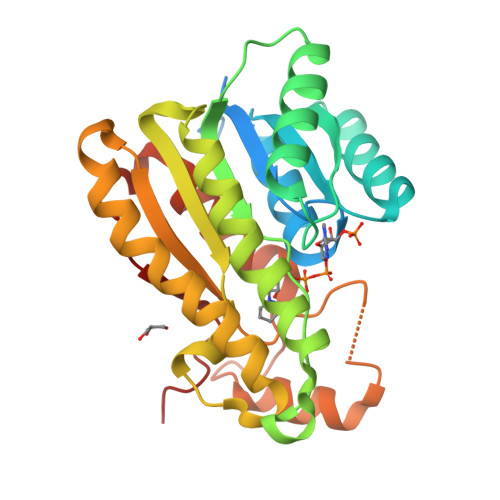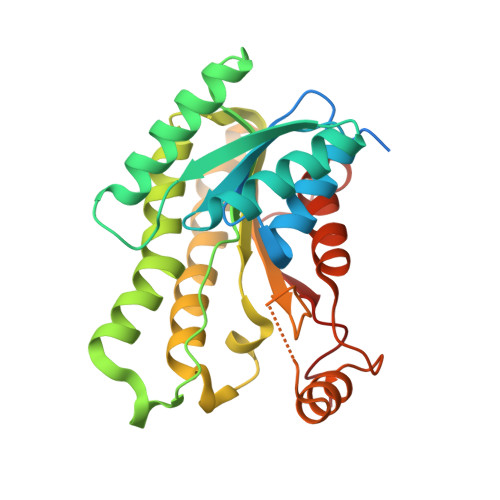A Standalone beta-Ketoreductase Acts Concomitantly with Biosynthesis of the Antimycin Scaffold.
Fazal, A., Hemsworth, G.R., Webb, M.E., Seipke, R.F.(2021) ACS Chem Biol 16: 1152-1158
- PubMed: 34151573
- DOI: https://doi.org/10.1021/acschembio.1c00229
- Primary Citation of Related Structures:
7NM7, 7NM8 - PubMed Abstract:
Antimycins are anticancer compounds produced by a hybrid nonribosomal peptide synthetase/polyketide synthase (NRPS/PKS) pathway. The biosynthesis of these compounds is well characterized, with the exception of the standalone β-ketoreductase enzyme AntM that is proposed to catalyze the reduction of the C8 carbonyl of the antimycin scaffold. Inactivation of antM and structural characterization suggested that rather than functioning as a post-PKS tailoring enzyme, AntM acts upon the terminal biosynthetic intermediate while it is tethered to the PKS acyl carrier protein. Mutational analysis identified two amino acid residues (Tyr185 and Phe223) that are proposed to serve as checkpoints controlling substrate access to the AntM active site. Aromatic checkpoint residues are conserved in uncharacterized standalone β-ketoreductases, indicating that they may also act concomitantly with synthesis of the scaffold. These data provide novel mechanistic insights into the functionality of standalone β-ketoreductases and will enable their reprogramming for combinatorial biosynthesis.
Organizational Affiliation:
Astbury Centre for Structural Molecular Biology, University of Leeds, Leeds LS2 9JT, United Kingdom.


















